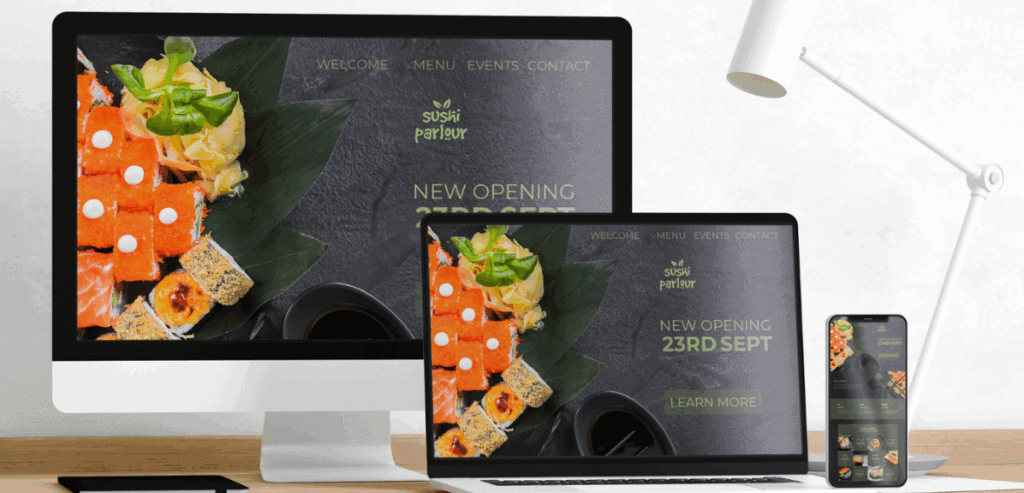Over the years, Facebook’s algorithm has transformed many times since its launch. However, in 2018, it began prioritizing content from friends and family. This has posed challenges to brands seeking to enhance their marketing strategies and reconnect with consumers.
In response, millions of virtual communities have sprung up from brands and consumers collaborating to share ideas and resources to create engaging content. These interactions boost brand engagement and visibility in people’s news feeds.
What is Facebook Group?

Facebook’s monthly active users stand at around 3 billion, and of these, 1.8 billion people engage in Facebook Groups.
Facebook Groups are dynamic online communities in which individuals unite to discuss ideas, experiences, and interests. Groups range from professional networking groups to close-knit hobby-based groups. By promoting active participation in the form of posting, commenting, and interacting, Groups provide a viable sense of community that can enhance businesses and organizations. It does require, though, time, effort, and strategy to develop and expand a thriving Facebook Group.
Facebook Groups are a great way to build communities and brand awareness even without an ad budget. Fortunately, there are tested, affordable methods that can increase your group’s visibility, engagement, and membership. These tips are excellent for small business owners, marketers, and community managers who want to build an active, successful Facebook community from the ground up. By using these proven strategies, you can gradually build your community from 0 to 10,000 or more members while building strong relationships with your audience.
How to create a Facebook Group

To make a Facebook group, go to your account and click on the Square icon. Select the subject of your group and enter some quick facts, such as a Group Name that you can find at your profile easily. Next, go for the privacy option – Public or Private – in order to determine who gets to view and join your group.
When new individuals request to join, ensure that they have an actual social media account. You can make your group public (anyone can search for it and join) or private (only members can view it). Public groups are simpler for individuals to find.
You may have a friend assist you in starting the group, but you can later remove them if needed. Once you click “Create,” you can customize the group by adding a cover photo, controlling posts, scheduling posts, and crafting a concise description for potential members.
Finally, use a maximum of five tags so that people can quickly find your group. You can even include a Cover Photo by finding a Flickr picture related to your group and ensuring it contains “Commercial use & mods allowed” rights.
Benefits of Facebook Group
For businesses, Facebook groups are a means of staying in contact with their audience, especially due to the shifting focus on enhancing post visibility. They are creations that could connect the brand with people with common interests, thus developing a funny community surrounding their products or services. They would also provide a channel through which a business can get quick feedback on the current perception of the customers toward the products, and gather ideas for their future launches through current discussions and polls in the group.
Posts in Facebook Groups reach more user eyeballs, which is perfectly fitting since directly communicating with a member of the group is much easier. Keeping constant conversations in the Group could convert members into loyal fans. The group can do networking in a way like online meetings that can grant new partnerships or even career opportunities.
Starting a group based on a brand or interest builds loyalty with current customers and allows for more personal chats. Answering comments and questions makes the brand feel closer and strengthens community bonds. Facebook usually shows Group content more to members, making it more relevant and effective.
Grow and Promote Your Facebook Group

Catchy Name for the Group
To attract potential customers to your Facebook group, choose a name that is fun and attention-grabbing. Consider what they are looking for in an online community and how your services or products can assist them.
Choose a name with key words, to help make it simpler for others to locate your group. Facebook ranks groups by size, quality, and location, so by following this, you can make your group appear higher in search results, subsequently, attracting more members.
Rules Making Along with Screen Application
As a group admin, it is time to make some rules and set goals; to provide the necessary booklet for application into the group. Early rules could help you gain yourself a great and professional environment. Rules could prevent others from self-promotion and incite everyone into participation.
However, careful checking of the applicants would assure joining of the right profiles to the group, thus enabling growth and bringing in more prospects for members. And though time-consuming, these efforts pay off in the long run by setting off the right environment and professionalism of the community.
Posting Links
To expand your Facebook group, make it easily searchable by posting a link on your site, putting it in your main menu or sidebar, and posting it to your personal and business pages. This way more people will view it, click on it, and join.
Also, include a short link in your Instagram bio and include a link in your email signature. Sites such as YouTube, Snapchat, and TikTok allow you to include clickable links, so ensure your link is visible and clickable wherever your audience is. The more you share it, the larger your group will become.
Sharing Links in Other Groups
To increase your Facebook group, attempt to share it in other groups where individuals may enjoy what you have to provide. For instance, if you have a music lovers’ group on your music store, search for other music groups.
Rather than posting your link in those groups, propose that you invite one another to your groups. This can attract new members and increase your group. This process doesn’t take long and can actually make your group bigger.
A Reason for Joining the Group
To grow your Facebook Group fast, in the About section, describe what the Group is for, what posts to expect, and how users will benefit. Use those 3,000 characters efficiently and offer rewards like weekly giveaways, contests, and special deals. Pick a fun theme that gets people talking. Consult Sunny Lenarduzzi’s book about fun, trendy topics to create Groups for. These will give people a great reason to join your Group.
Stand in Front of Audiences
An excellent online community encourages users to participate. To grow your Facebook group, you can try guest blogging, get interviewed on blogs or podcasts, hold special webinars for group members, reach out to popular influencers, and refer to your group in other Facebook groups. These measures will pave your way to recognition, bringing in more people into the fold. Guest posting is where a website owner allows you to write something about a subject while also mentioning your group.
Another way to make your group known is to get interviewed on a blog or a podcast. A special webinar can be conducted for your members and sent to other members outside the group. Influencers can help promote this group on Facebook, but you have to offer them worthwhile and exclusive content. Expect that not everyone will take your request, so keep promoting your Facebook group.
Using Pinterest to Promote
Pinterest is a favorite website among creative individuals, so it’s an excellent site to advertise Facebook groups and recruit new members. Create a snappy graphic using a free resource such as Canva. Pin it on Pinterest with targeted hashtags. This will attract a lot of new members by itself.
You can also post the same graphic on Twitter to reach an even wider audience. Include a call to action and a click-through link, since pictures receive more attention than words, and your group could receive numerous new applicants.
Using Facebook Live to Promote
Facebook Live is an excellent means of promoting Facebook groups since it enables hosts and viewers to interact in real time. Live videos receive three times more engagement and ten times more comments compared to normal videos. To attract new members, begin live streams from your business page or your Facebook Group.
Discuss trending topics in your niche, such as cooking demonstrations or food news. To advertise your group, say it at the beginning and end of the stream, invite viewers to take action, add a link to your group in the description of the video, engage with comments, and recommend sharing the live stream on profiles.
Using Ads to Promote
To get people to join your Facebook group through paid ads, first create a Facebook page, then go on to Facebook Ads Manager, select Engagement as your ad type, name your ad, select your Facebook page, and then set your goal as Page Likes. Target your ad to fitness enthusiasts in the Detailed Targeting section by selecting their interests.
This way you’re more likely to attract the people you want. Facebook Boost is a great way to advertise on a budget. Test different ads and methods, and after you spend around $50, you can check how things work. You can also promote popular posts to gather user interest. You could also use free marketing methods to grow your group.
Holding Giveaways and Contests
Giveaways and contests are great ways of growing a Facebook group and getting people involved. They are easy to set up even for small businesses. The contest, in brief, is just a template, the rules, and the prize. Allow anyone to enter or ask Facebook users to join the group first. Additional chances for winning can come when people tag friends or share the post. This allows more people to be aware of the contest, the brand, and the group itself.
Moreover, running contests and giveaways can bring more followers to your social media, grow your email list, and increase visits to your website. You may start something like a referral program to help grow your group by word of mouth. Examples of prizes include merchandise, personal coaching, online courses, or a one-year subscription to your videos. Regularly running these types of events will give members something to look forward to.
Working with Influencers and Forming Partnerships
Influencers in your area have a very loyal fan following. Smaller ones may only have a few fans, but bigger ones can have millions. Working with smaller influencers is cheaper and easier, but big ones can offer greater visibility. Massive partnerships require more resources though. Before contacting influencers, make sure their content matches the goal of your Facebook group. Offer them appealing rewards for promoting your group: cash, free products, or social media shout-outs.
Brands can grow their audiences while working together with similar groups. Analyze your audience and think of the shared interests. For instance, a skin care brand could collaborate with a razor brand for sensitive skin. They can do ever friction-free giveaways and share content to strengthen each partner’s relationship and naturally grow the group.
Trending Posts Helps in Popularising the Group
Digital marketing experts and advertisers work to create interesting posts to attract more visibility and reach more people. But to make that lucky post more visible, it’s not just paying for Facebook to boost it. You have to engage with people by responding to their comments. Reply to a comment or two, wait at least a half-hour, and reply to a few more. Keep this up until the post has run its course. Based on this behavior, Facebook will rank your post higher in searches, bringing even more traffic to your content.
Friendly Online Community
Keeping a friendly online community is very important today. Thus, to create a comfort zone for new members, we can use emojis, gifs, a friendly touch, some punchlines, as jokes are called; Everything that, in one way or another, makes this space of discussion occupy every member’s mind for feedback-sharing. Members that choose to be there will increase engagement with you and with each other, which leads to positive reviews. Their general happiness helps shield you from bad comments and has a good effect on the growth of your brand.
Conclusion

To grow your Facebook Group, start by deciding what it’s about and naming it something your audience enjoys. Share your group on various platforms, partnering with some influencers for wider reach. Offer helpful content that members enjoy and encourage them to interact. Speak directly with members, keep their interest alive with Facebook Live and contests. Instead of just trying to gather more numbers, think more in terms of involvement to build an active community that will aid your business and strengthen customer loyalty.
Consider the long game: understand Facebook’s updates, have admins in place, and give a warm welcome to new members. Strongly theme your community, provide good reasons to join it, and inform your current audience about the group. Expand to new viewers by guest blogging, working with influencers, conducting interviews, and doing podcasts












